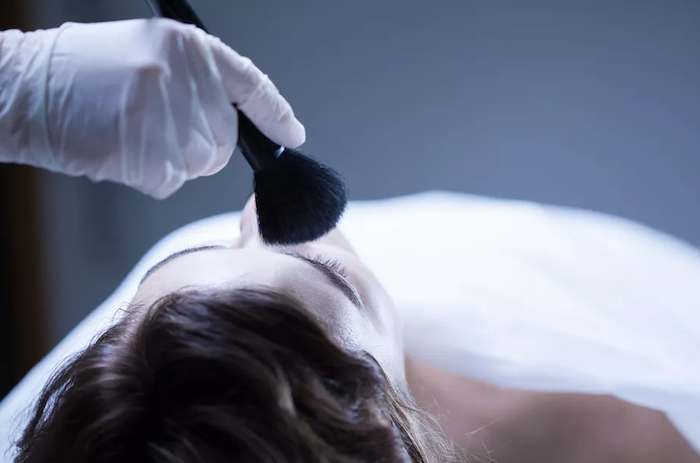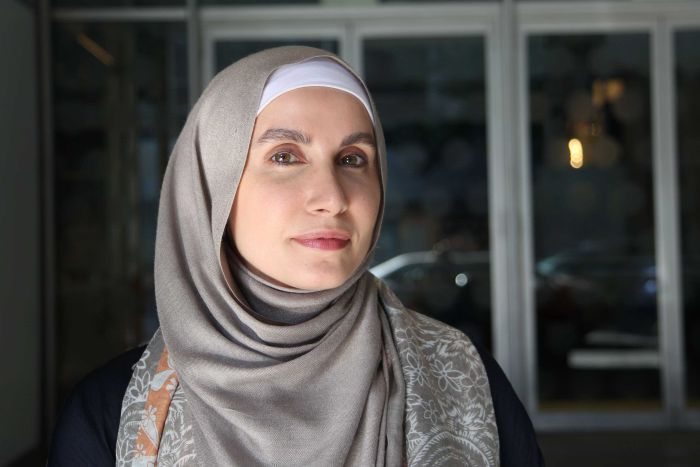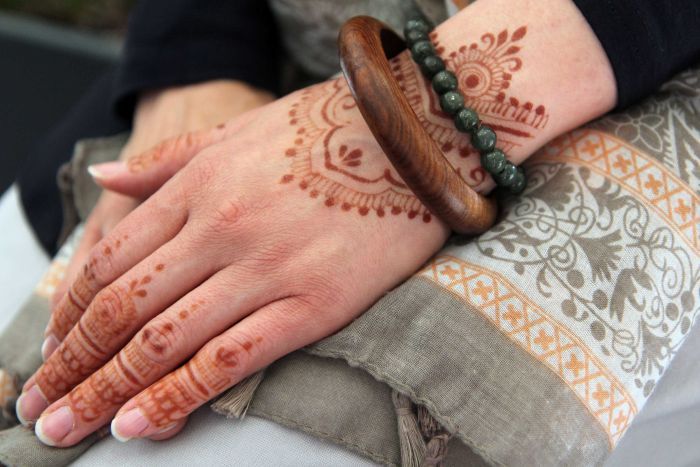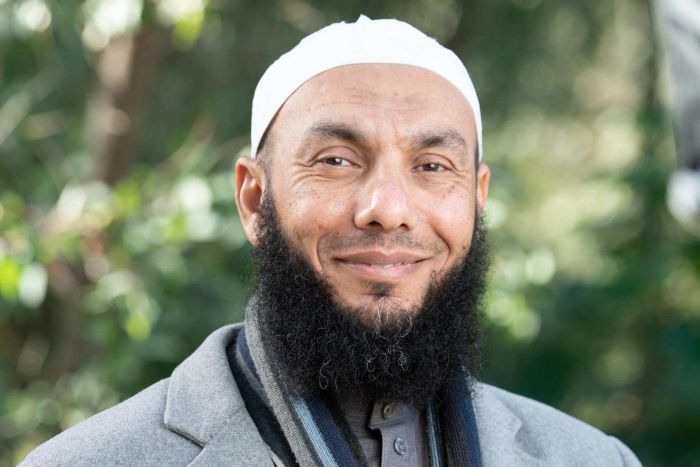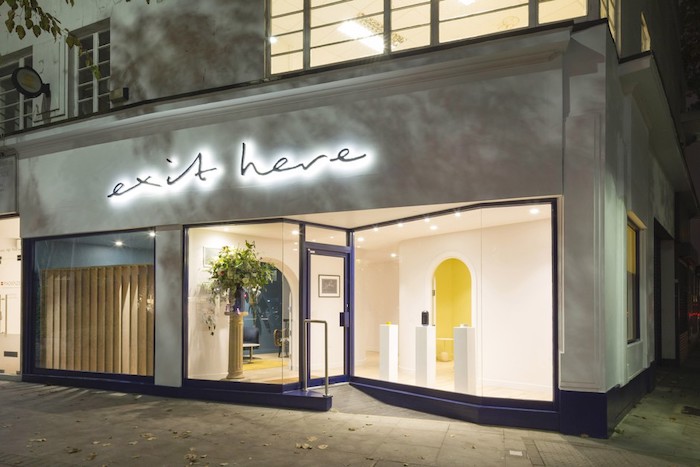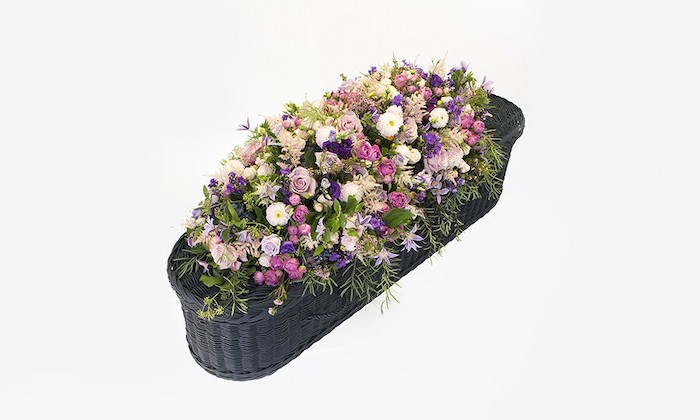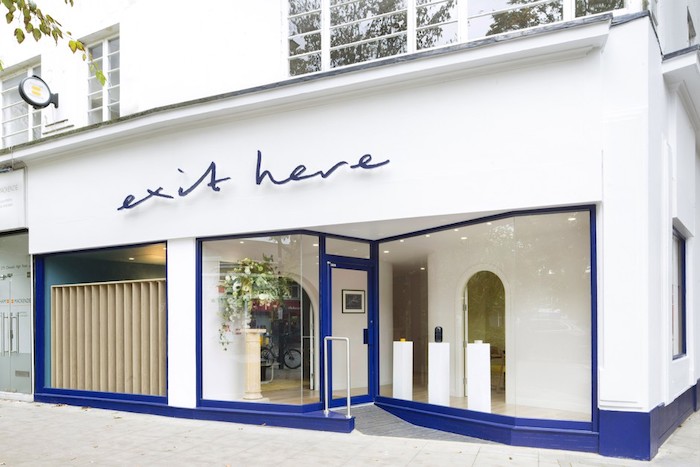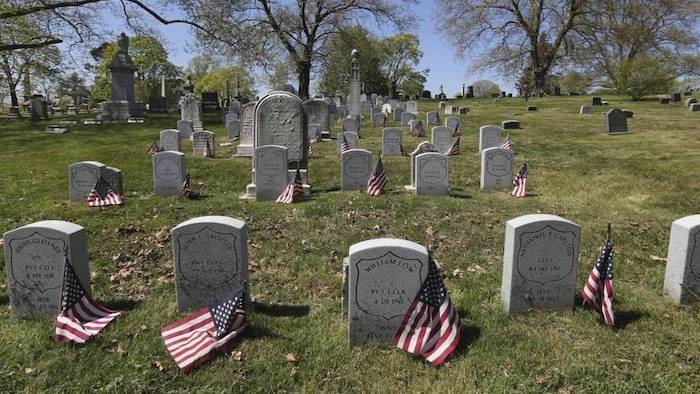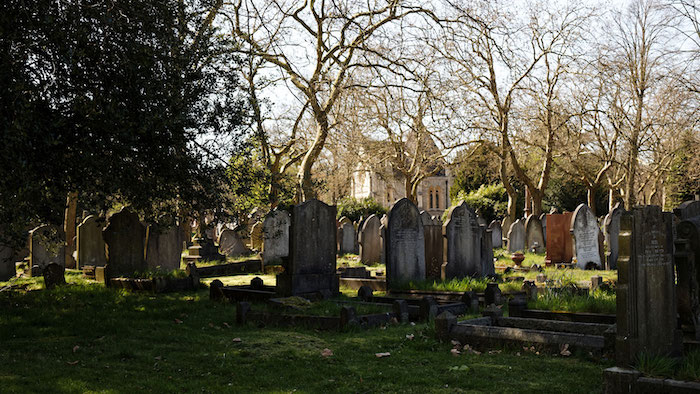
by Alex Brown
Visitors to the White Eagle Memorial Preserve in southern Washington won’t find rows of headstones, manicured lawns or pathways to a loved one’s final resting place. Instead, they stroll through an oak and ponderosa forest set within more than a thousand acres of wilderness.
Twenty acres of the wilderness is set aside as a cemetery. Bodies are placed in shallow graves among the trees, often wrapped in biodegradable shrouds, surrounded with leaves and pine needle mulch, and allowed to decompose naturally, returning nutrients to the soil. Grave markers are natural stones, said Jodie Buller, the cemetery’s manager—”rocks that look like rocks.”
“People drive their loved one out themselves, in the back of a Subaru,” Buller said, summing up White Eagle’s granola ethos.
Conservation cemeteries like White Eagle, which was founded in 2008, are still few and far between—only seven have been officially recognized by the Green Burial Council, the industry’s certification body—but they’re part of a growing movement to handle the dead in eco-friendly ways.
Green burial, the catchall term for these efforts, takes many forms, from no-frills burials in conventional cemeteries to sprawling wilderness conservation operations. Cemetery operators say they’re seeing increasing interest in these less conventional end-of-life options.
“It’s been a slow, slow growth, but we are seeing the groundswell happening now,” said Brian Flowers, burial coordinator with Moles Farewell Tributes, which conducts green burials along with more conventional options on sites in Washington state.
While no state laws explicitly prevent green burial—generally defined as burials that happen in eco-friendly containers and without embalming—cemetery operators all over the country say outdated state and local laws have made it difficult for green burial to gain a foothold.
Many followers of Islam and Judaism use similar practices, burying the dead in a shroud or coffin of untreated wood without cremating or embalming. Such techniques are allowed in every jurisdiction, but new cemeteries with an explicit focus on green burial have run into obstacles.
Cemeteries were little-regulated until the late 1800s, experts say, when officials began adding rules primarily for consumer protection. The goal was to prevent scam artists or ill-prepared operators from opening cemeteries that might later be abandoned. But the regulations establishing best practices for conventional cemeteries often inhibit green-burial practices.
“The bottom-line issue in pretty much every state is the statutes don’t contemplate this kind of burial ground,” said Tanya Marsh, a professor at the Wake Forest University School of Law who has written books about laws pertaining to the dead. “It’s probably not that the legislators wanted to make things difficult; it just didn’t occur to them that everybody wasn’t going to set up a cemetery in what they conceived of as a regular cemetery.”
While no organization keeps a comprehensive database of all state and local cemetery laws, operators have no shortage of stories about the obstacles they’ve faced. Some laws, for instance, require paved roads to burial plots. Others mandate fencing around cemeteries—both antithetical to the natural settings required for conservation cemeteries.
Many states mandate that new cemeteries set up a large endowment fund for future maintenance, which green-burial advocates say is a burdensome requirement for places that are intended to be left in their natural state.
Some states require a licensed funeral director to handle transportation, and some laws mandate refrigeration or embalming once a person has been dead more than 24 hours. Green-burial advocates say families should be allowed to take care of arrangements themselves, and these laws are based on misguided fears that the dead carry diseases.
In many places, local officials may not give green cemeteries the zoning permits they need or may pass other regulations to block them. In 2008, for instance, commissioners in Georgia’s Mason-Bibb County adopted an ordinance requiring leak-proof containers for burials after neighbors complained about a proposed green-burial cemetery.
Advocates say their movement is long overdue. According to the California-based Green Burial Council, cemeteries in the United States put more than 4 million gallons of embalming fluid and 64,000 tons of steel into the ground each year, along with 1.6 million tons of concrete.
Consumers are shifting their behavior as well. More than half of the dead in the United States are cremated today, according to a report from the National Funeral Directors Association, up from an industry-estimated rate of just 4% in the 1960s.
That’s at least partially because cremation is less expensive, but some Americans also have expressed a desire to leave a smaller environmental footprint. However, the council estimates that cremation—which involves heating a furnace to close to 2,000 degrees Fahrenheit for up to two hours—produces about the same emissions as driving 500 miles in a car.
Burial also is a land-use issue, as cemeteries must claim ever-increasing acres to accommodate new arrivals. Conservation cemeteries, on the other hand, are designed to preserve and expand existing wilderness areas while using the burials as a funding mechanism for the environmental work.
White Eagle, which has buried about 85 people so far and has reserved another 130 sites, charges a little more than $3,000 for a burial, which helps with continued land acquisition, invasive-species monitoring and forest management to reduce wildfire danger.
A 2019 survey from the funeral directors’ association found that nearly 52% of Americans expressed interest in green-burial options. Most cited environmental reasons, but others mentioned cost.
“Most people know what green burial is,” said Lee Webster, who heads education for the Green Burial Council. “They just don’t know how to make it happen.”
The council currently recognizes 72 cemeteries in the country that conduct green burials, ranging from “hybrid” cemeteries that allow green burials alongside conventional plots to conservation cemeteries that can span vast wilderness areas. While an increasing number of cemeteries are adding green options, operators say they face many hurdles in trying to set up new cemeteries dedicated to the practice.
Heidi Hannapel and Jeff Masten run Landmatters, a consulting firm based in North Carolina that helps those seeking to establish conservation cemeteries. The partners are attempting to set up their own such cemetery in North Carolina, but obstacles have stalled the project.
“We’d have to pave an entire road throughout the property,” Hannapel said. “That completely defeats the purpose of what we’re trying to create. We’d have to establish a large endowment that would have to be held back. There’s no room within existing North Carolina law that allows for what we’re talking about.”
Freddie Johnson, executive director of the Prairie Creek Conservation Cemetery in Florida, said the cemetery does not sell sites in advance, which exempts it from state statutes that would have required more than $250,000 upfront. However, that requirement makes it difficult for customers who can’t pre-plan their burials.
“The whole industry is set up to accommodate modern burial,” Johnson said. “You’re trying to do something simple and better for the environment, and some rules and statutes become hurdles. There needs to be another model available for cemeteries to choose based on natural and conservation burial.”
Few states are looking at changes to their burial policies. Wisconsin legislators are considering a bill to allow alkaline hydrolysis, an eco-friendly form of liquid cremation that uses a pressurized solution to rapidly decompose a body. But green-burial operators say they’ve seen little action on policy related to their cemeteries.
Aside from regulatory hurdles, operators say there’s also much work to be done in educating consumers.
“Everybody assumes you need to be embalmed or you can’t transport unembalmed bodies,” said Kimberley Campbell, who operates Ramsey Creek Preserve, a conservation cemetery in South Carolina. “The idea that you’re going to be spreading disease if you don’t embalm the body is complete codswallop.”
Buller, who manages the preserve in southern Washington, said she would like to see hospital chaplains and hospice workers present green burial as an option when they talk with families about their end-of-life choices.
Meanwhile, the so-called death care industry has begun to offer options with various “shades of green”—such as wicker caskets, urns designed to grow into trees and an organic mixture that reduces the toxicity of cremated remains, allowing for safe mixing into the soil.
In Washington, lawmakers passed a bill earlier this year allowing for human composting. The measure was based on a technology that rapidly converts human bodies into soil. State Sen. Jamie Pedersen, the Democrat who sponsored the bill, said it enjoyed broad support.
The bill passed on an 80-16 vote in the House and a 38-11 vote in the Senate. Among those opposed was the Washington State Catholic Conference, which argued that human composting disrespects the body in a manner against church teaching.
“The Catholic Church strongly recommends that the bodies of the deceased be buried in cemeteries and other sacred places,” the conference said in a news release when Democratic Gov. Jay Inslee signed the bill. “The practice of burying bodies of the deceased shows a greater esteem towards the deceased.”
Pedersen said that he would be open to looking at more changes to state law to accommodate green burial.
“If there are obstacles to responsible practices for the disposal of human remains,” he said, “it makes sense for us to clear those away and leave space for the practice to develop.”
Any movement to change cemetery law would make Washington a rare case, said Marsh, the legal expert.
Some in the green-burial movement blame that on the existing funeral industry, which they believe has outsize political influence, as well as control over many local cemetery commissions. But Jimmy Olson, spokesman for the National Funeral Directors Association, noted that many conventional cemeteries are adopting their own green options.
“With cremation rates now over 50%, I would think they would welcome this with open arms, because they would see this as an option to continue to use their cemeteries,” he said. “This is only going to help them as more and more people choose not to use a cemetery.”
Joshua Slocum, executive director of the Funeral Consumers Alliance, said it’s important for customers to know they can opt for a green burial—and save money—at many conventional cemeteries, simply by declining options that aren’t eco-friendly.
Some green-burial plots are less expensive than conventional ones, but they still cost more than cremation. However, because of the costs for embalming, caskets and vaults, green burials are often more affordable than the full cost of a conventional burial.
The typical U.S. funeral costs more than $8,000, according to the funeral directors’ association, even before the purchase of a cemetery plot. An average burial plot costs from $1,000 to $4,000, according to the life insurance company Lincoln Heritage. Green-cemetery operators interviewed for this story charge from $2,000 to $4,500 for plots.
“Everything about death is so commercialized that we have a hard time thinking about anything other than a product that can be purchased,” Slocum said. “No state requires embalming as a condition of being buried. No state law requires a coffin or casket. No state requires a concrete vault.”
Still, he acknowledged that many who choose green burial may prefer not to be put in the ground between plots with vaults, caskets and embalmed bodies. Regulations may need to change to accommodate new cemeteries that don’t fit the traditional mold.
“We need to get over this idea that everything needs to look like an MGM backlot and manicured within an inch of its life,” he said. “I’m hoping that the artificial prissiness that has dominated the American approach can go away.”
Complete Article ↪HERE↩!

